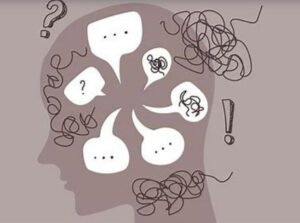Chronic pain is a complex beast, often accompanied by an unwelcome mental companion:
 repetitive unpleasant thoughts (rumination). For many pain sufferers, the tendency to dwell on their discomfort, limitations, and worries can amplify their suffering and hinder recovery. Learning to break this cycle is crucial for managing pain effectively and improving quality of life.
repetitive unpleasant thoughts (rumination). For many pain sufferers, the tendency to dwell on their discomfort, limitations, and worries can amplify their suffering and hinder recovery. Learning to break this cycle is crucial for managing pain effectively and improving quality of life.
This habit of repeatedly focusing on negative thoughts and feelings, can trap chronic pain sufferers in a vicious cycle. The more they fixate on their pain, the more intense it becomes, leading to increased stress and anxiety, which in turn exacerbates the pain. This negative feedback loop can feel inescapable, but there are ways to break free.
Here are some strategies to help chronic pain sufferers stop ruminating:
- Mindfulness meditation: This involves focusing on the present moment, often by concentrating on your breath or bodily sensations. When pain-related thoughts arise, acknowledge them without judgment, then gently return your focus to your breath or chosen point of focus. This practice helps create distance from negative thoughts and reduces their power over you.
- Cognitive restructuring: Identify negative thought patterns related to your pain (e.g., “I’ll never get better”). Challenge these thoughts by asking for evidence, considering alternative perspectives, and developing more balanced thoughts (e.g., “While my pain is challenging, I’m learning new ways to manage it”).
- Engage in absorbing activities: Choose activities that capture your full attention, such as puzzles, art projects, or learning a new skill. These tasks occupy your mind, leaving less room for pain-focused thoughts. They can also provide a sense of accomplishment, boosting mood and self-esteem.
- Physical activity: Even gentle exercises like walking, swimming, or yoga can help. Physical activity releases endorphins, natural pain-relievers that can improve mood. It also provides a focus outside of pain and can improve overall physical function.
- Social connection: Engage with friends, family, or support groups. Sharing experiences can provide emotional relief and new perspectives. Social interactions also offer distraction and can remind you of the positive aspects of your life beyond pain.
- Set aside “worry time”: Allocate a specific 15-30 minute period each day for addressing pain-related concerns. When worries arise outside this time, note them down for later and refocus on the present. This technique helps contain anxious thoughts and prevents them from dominating your day.
- Progressive muscle relaxation: Systematically tense and relax different muscle groups in your body. This can help reduce physical tension associated with pain and stress, and provides a focused activity to redirect your mind from rumination.
- Journaling: Write about your experiences, thoughts, and feelings. This can help externalize your concerns, provide emotional release, and often leads to new insights about managing your pain.
- Positive visualization: Spend time each day imagining yourself engaging in activities you enjoy, free from pain. This can help shift your focus towards positive outcomes and reinforce a more optimistic mindset.
- Pacing activities: Break tasks into smaller, manageable parts with rest periods. This can prevent pain flare-ups that fuel negative thinking and provide a sense of accomplishment as you complete each part.
Remember, breaking the habit of rumination takes time and practice. Be patient with yourself and celebrate small victories. By learning to redirect your thoughts away from pain-focused rumination, you can take significant steps towards managing your pain and reclaiming control over your life.
